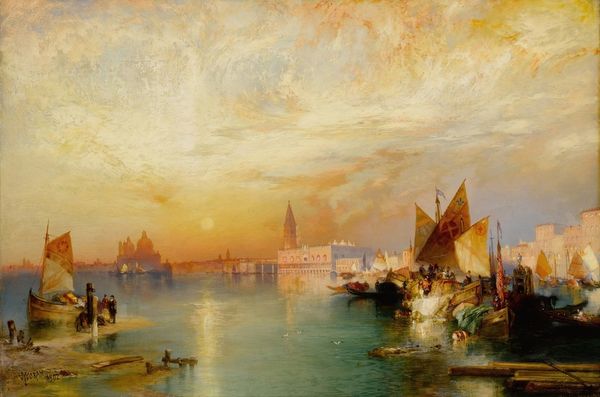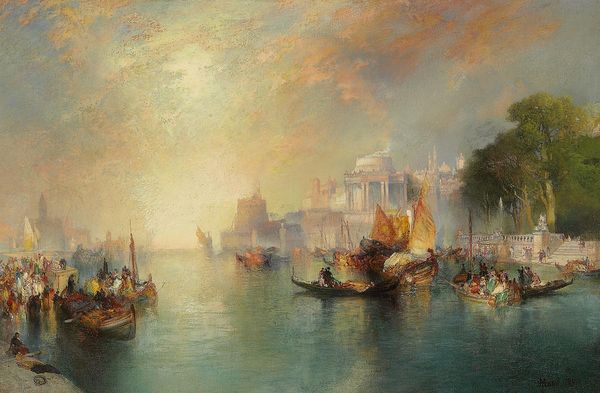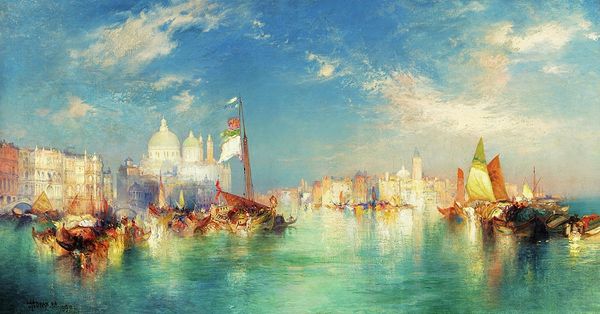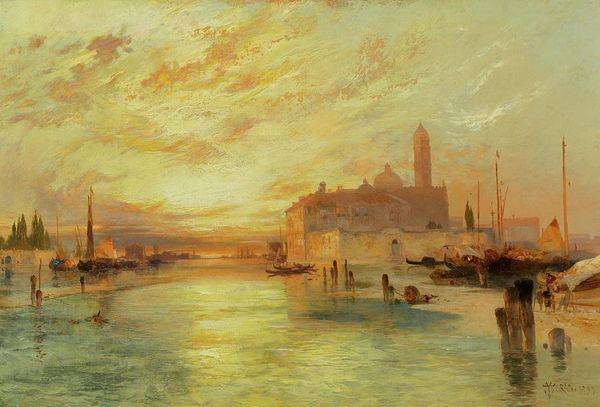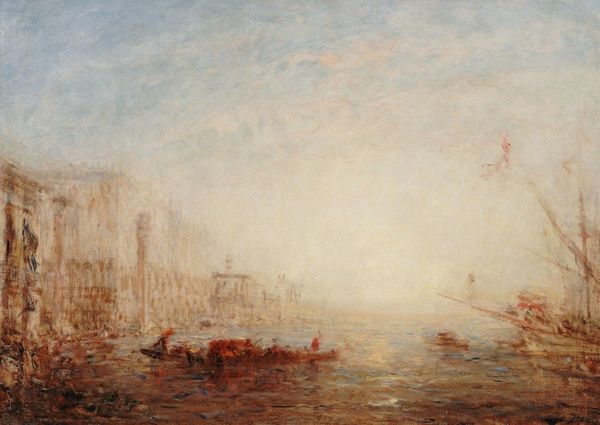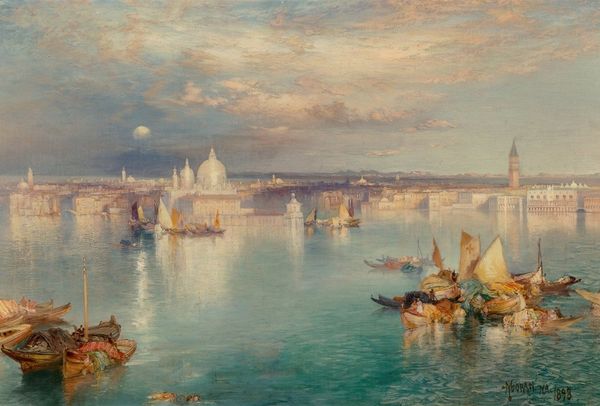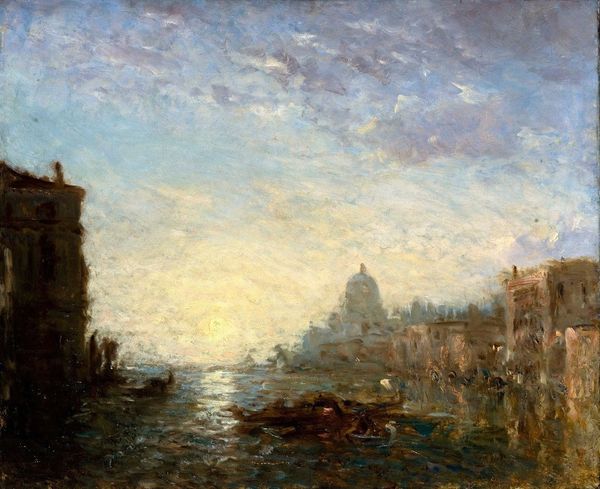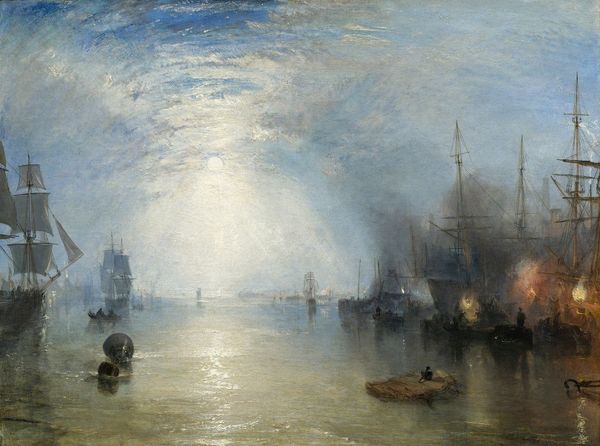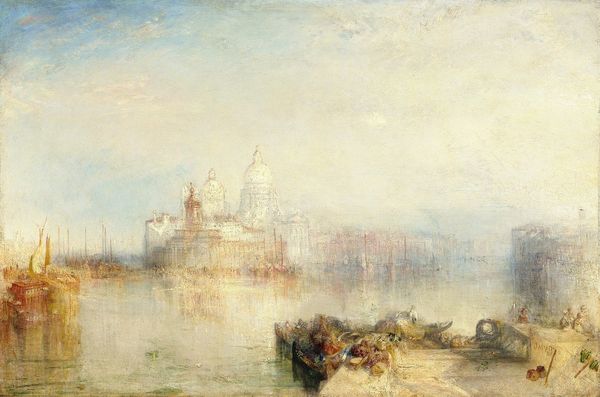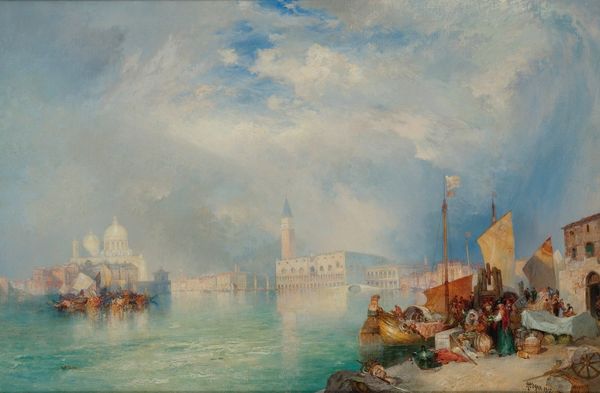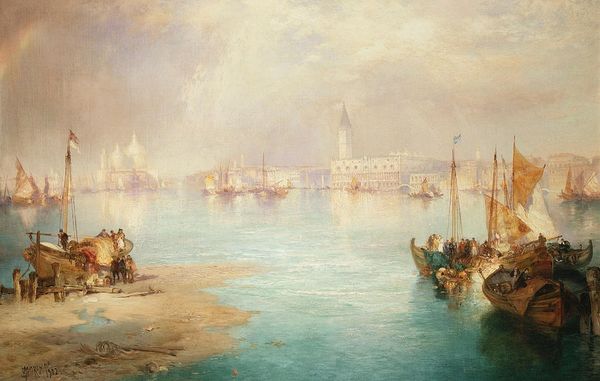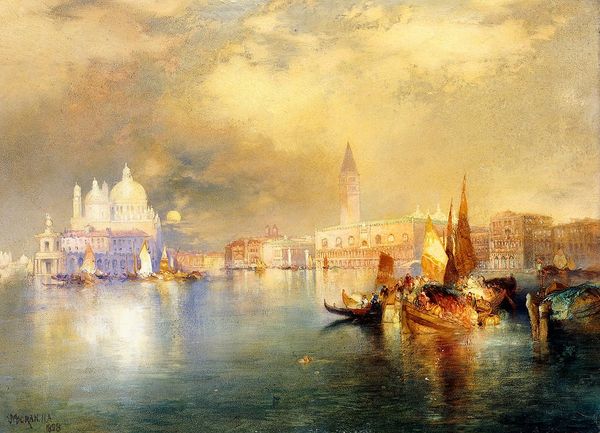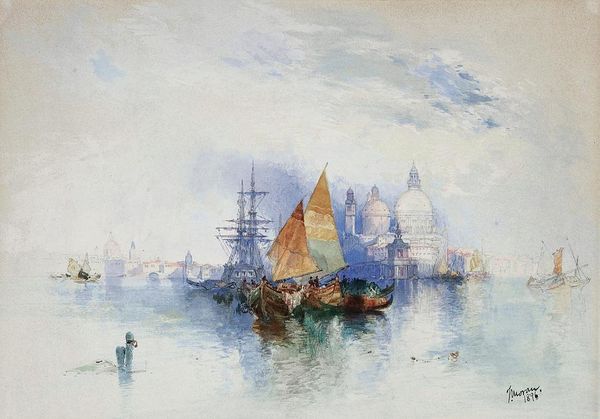
Dimensions: 51 x 76.5 cm
Copyright: Public domain
Editor: This is Thomas Moran’s "Venice," created in 1904 with oil paint. It really captures a hazy, almost dreamlike vision of the city, all pastel colors and soft edges. What strikes me most is how the light seems to dissolve the architecture. What do you see in this piece? Curator: Beyond the readily apparent picturesque scene, I'm drawn to considering the socio-economic conditions that enable its production. The availability of industrially produced oil paints in tubes, for instance, radically alters artistic practice. It allows for portability and for capturing fleeting atmospheric effects en plein air. Editor: That's fascinating. I hadn't really considered how the actual availability of the paints impacted the style. Curator: Precisely. Furthermore, consider the consumption of these idyllic images. Venice, at this time, becomes increasingly popular among wealthy tourists. Moran's painting isn't simply depicting a place, it is also catering to, and feeding into, a specific demand for romanticized visions of Europe that fuel global tourism. Where do you think this fits into a broader trend of Orientalism at the time? Editor: Oh, I see! It’s part of constructing an idea of Venice as this exotic, beautiful place for the upper classes. Almost a kind of commodity. I was just seeing a pretty picture, and you've made me realize there's so much more to unpack about labor, materials, and social context! Curator: Exactly! Looking closely at the materiality and the social conditions that enable both the production and consumption of a work transforms how we understand it.
Comments
No comments
Be the first to comment and join the conversation on the ultimate creative platform.
